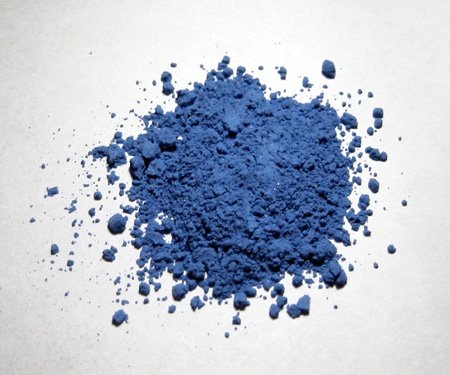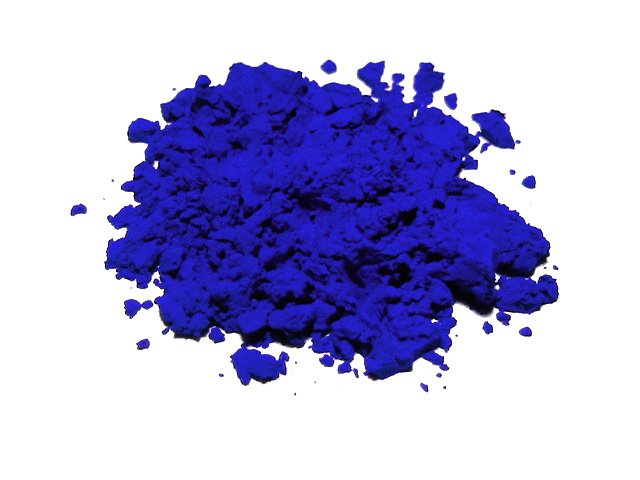Ultramarine: Beyond the Blue
The journey of ultramarine from the remote lapis lazuli mines of Afghanistan to the esteemed canvases of the Renaissance and beyond is a fascinating narrative of art, science, and commerce. Ultramarine, renowned for its deep and captivating blue, has not only been a symbol of wealth and divine beauty but also a subject of relentless scientific inquiry leading to the creation of its synthetic counterpart. This exploration delves into the multifaceted history of ultramarine, examining its nomenclature, sourcing, the challenges and triumphs of its integration into artists' palettes, and its depiction in iconic artworks. Further, it contrasts the nuanced differences in colour between the authentic pigment derived from natural lapis lazuli and its synthetic version, underscoring the advancements in chemical synthesis that have democratized access to this once-exclusive colour. The narrative of ultramarine is not merely about a pigment but encapsulates a broader discourse on the intersection of natural resources, artistic endeavor, and technological innovation.
Previous Names and Etymology
Ultramarine, historically revered for its vibrant blue hue, derives its name from the Latin "ultramarinus," which translates to "beyond the sea." This nomenclature reflects the pigment's origins and the extensive journey it undertook to reach European artists. Initially referred to as "azure" in various historical documents, the term ultramarine was adopted to underscore its exotic and valuable nature. The pigment's rarity and the difficulty associated with its procurement from distant lands contributed to its esteemed status and the evolution of its name, symbolizing both its geographic origin and its transcendent beauty.
Sourcing and Geographic Origin
The primary source of ultramarine is the semi-precious gemstone lapis lazuli, primarily mined in the Badakhshan province of northeastern Afghanistan, a region historically acknowledged as the sole source of high-quality lapis lazuli suitable for conversion into ultramarine pigment. The process of extracting ultramarine from lapis lazuli was labor-intensive and complex, involving grinding the stone into a fine powder and purifying it through a series of intricate steps to separate the blue particles from impurities. The scarcity of lapis lazuli and the arduous extraction process made ultramarine one of the most expensive pigments available to artists until the development of a synthetic alternative in the 19th century.
Introduction to Artists' Palettes
Ultramarine's integration into artists' palettes dates back to the 6th century, appearing in manuscripts and artworks across Asia, the Middle East, and eventually Europe. However, its widespread use in European art was not observed until the 13th century, facilitated by the improved trade routes established during the Crusades. Its rarity and cost meant that ultramarine was often reserved for the most prestigious commissions and the most significant parts of paintings, such as the Virgin Mary's robes in Christian iconography. The pigment's significance was not solely due to its vibrant colour but also its association with holiness and virtue, underscoring its spiritual value in addition to its aesthetic appeal.
Famous Artworks Featuring Ultramarine
Ultramarine has graced numerous renowned artworks throughout history, exemplifying its revered status among artists.
Jan van Eyck, The Arnolfini Portrait, 1434. Oil on oak wood. Image from Wikimedia Commons.
One of the most notable examples is the "Arnolfini Portrait" (1434) by Jan van Eyck, where ultramarine was used to paint the lavish dress of the woman, highlighting the pigment's association with wealth and prestige.
Raphael, The Sistine Madonna, 1512-1514. Oil on Canvas. Image from Wikimedia Commons.
Another significant work is the "Sistine Madonna" (1512-1514) by Raphael, featuring the Virgin Mary draped in robes of deep ultramarine, underscoring the pigment's symbolic importance in religious iconography. These artworks not only showcase ultramarine's aesthetic appeal but also its role in conveying thematic and symbolic messages.
Synthetic Ultramarine: Development and Impact
The synthesis of ultramarine in the early 19th century marked a pivotal moment in the history of art materials. French chemist Jean-Baptiste Guimet successfully created a synthetic version of ultramarine in 1826, which was subsequently patented in 1828.
Artificial ultramarine blue, Jean Baptiste Guimet. Image from Wikimedia Commons.
This development significantly reduced the cost of the pigment, making it accessible to a broader range of artists and facilitating its use in a wider array of applications. The synthetic variant, known as "French ultramarine," closely mimics the colour and properties of its natural counterpart, contributing to the democratization of this once-exclusive pigment. The advent of synthetic ultramarine not only transformed artists' palettes but also had a profound impact on the production of paints, dyes, and other materials, highlighting the intersection of art, science, and industry.
Ultramarine vs. Synthetic Ultramarine
The colour of ultramarine, whether natural or synthetic, is distinguished by its deep, vibrant blue hue, a characteristic that has made it a prized pigment throughout history. However, despite their visual similarities, there are subtle differences in the colour properties of natural and synthetic ultramarine that have implications for their use in artistic and industrial applications.
Natural ultramarine, extracted from lapis lazuli, exhibits a slightly variable colour spectrum due to the presence of impurities and the inherent variations in the mineral's composition. These variations can impart a range of blue tones, from deep ultramarine to lighter shades, occasionally with a hint of violet. This variability is not just a function of the pigment's mineral source but also of the traditional extraction process, which can influence the final shade of blue. The unique colour nuances of natural ultramarine are often described as possessing a certain warmth and depth, qualities that have contributed to its esteemed status in art history. These subtle variations in hue and depth add a level of complexity and richness to artworks, making natural ultramarine highly valued for its aesthetic qualities.
In contrast, synthetic ultramarine, developed in the early 19th century, offers a more consistent colour profile due to the controlled conditions of its production. While it successfully replicates the vibrant blue colour characteristic of its natural counterpart, synthetic ultramarine tends to have a slightly cooler tone and lacks the minor variations and depth of hue found in natural ultramarine. This consistency is advantageous in industrial applications where uniformity of colour is crucial, such as in paints, plastics, and textiles. However, in artistic contexts, the uniformity of synthetic ultramarine's colour can be perceived as less nuanced compared to the natural pigment.
The difference in colour between natural and synthetic ultramarine is not solely a matter of hue but also involves perceptions of depth, warmth, and texture, which are influenced by the pigments' origin and mode of production. While synthetic ultramarine offers advantages in terms of cost and availability, the unique characteristics of natural ultramarine derived from lapis lazuli continue to hold a special allure for artists and connoisseurs who value the subtle variations and historical significance of the pigment.
Conclusion
The synthesis and widespread adoption of synthetic ultramarine underscore the ongoing evolution of art materials in response to scientific advancements and economic factors. This development has facilitated a more inclusive approach to art-making, allowing artists to explore the aesthetic and symbolic potentials of ultramarine without the constraints imposed by its cost and rarity. Furthermore, the history of ultramarine—from its origins as a precious pigment derived from lapis lazuli to its current status as a widely available synthetic product—reflects broader themes in the history of art, including the interplay between technology, economics, and artistic expression.





